Description
The instruction for medical use
of Normodipin® medicine
the Trade name
of Normodipin®
the International unlicensed
name Amlodipin Lekarstvennaya a form
of the Tablet of 5 mg, 10 mg
Structure
One tablet contains
active agent – amlodipin 5 mg or 10 mg (in the form of an amlodipin besilat 6.944 mg or 13.889 mg respectively),
excipients: magnesium stearate, sodium of starch glikolit,
type A, calcium hydrophosphate anhydrous, cellulose microcrystalline
the Description
of the Tablet prodolgovato – rounded shape, with a biconvex surface, white or almost white color, with an engraving 5 on one party (for a dosage of 5 mg).
Tablets prodolgovato – rounded shape, with a biconvex surface, white or almost white color, with an engraving 10 on one party and risky on another (for a dosage of 10 mg).
Pharmacotherapeutic group
Drugs for treatment of diseases of a cardiovascular system. Blockers of ‘slow’ calcium channels. Blockers of ‘slow’ calcium channels selection. Dihydropyridinic derivatives. Amlodipin.
The ATX C08CA01 code
the Pharmacological
Pharmacokinetics Absorption properties, distribution and linking with proteins
of Amlodipin plasma is well soaked up after intake in therapeutic doses. The maximum concentration of drug in blood is noted in 6-12 hours. The absolute bioavailability is about 64-80%. The volume of distribution is approximately 21l/kg. The researches conducted by in vitro showed that about 97.5% of the amlodipin circulating in blood contact proteins of plasma.
Meal does not affect bioavailability of an amlodipin.
Metabolism/removal
Final elimination half-life makes about 35-50 hours that allows to administer the drug once a day. Amlodipin is intensively metabolized in a liver to inactive metabolites, drug is removed with urine in the form of initial substance (10%) and metabolites (60%).
Use in an abnormal liver function
there Are limited clinical data concerning use of an amlodipin for patients with abnormal liver functions. Patients with a liver failure have reduced clearance of an amlodipin that leads to increase in AUC approximately by 40-60% and lengthening of elimination half-life.
Use for elderly patients
Time of achievement of the maximum concentration of an amlodipin in plasma at young and elderly patients is identical. However, at elderly patients the clearance of an amlodipin is reduced that leads to increase in AUC and elimination half-life at elderly. Increase in AUC and elimination half-life is also observed at patients with stagnant heart failure.
Use for children and teenagers.
The research of pharmacokinetics was conducted with participation of 74 children and teenagers aged from 12 months up to 17 years with arterial hypertension (34 patients aged from 6 up to 12 years, 28 patients from 13 to 17 years). Patients received amlodipin in doses from 1.25 to 20 mg one or twice a day. At children at the age of 6-12 years and teenagers at the age of 13-17 years the seeming clearance (CL/F) after oral administration was 22.5 and 27.4 l/h, respectively, at boys, and 16.4 and 21.3 l/h, respectively – at girls. The big interindividual variability was observed. Data concerning children up to 6 years are limited.
A pharmacodynamics
Being dihydropyridine derivatives, amlodipin inhibits transmembrane transition of calcium ions (a blocker of slow calcium channels or the antagonist of calcium ions) and also blocks transmembrane current of calcium ions in smooth muscle cells of a myocardium and vessels.
The mechanism of hypotensive action of an amlodipin is caused by the direct weakening action on unstriated muscles of vessels. The exact mechanism of action of an amlodipin in stenocardia is not finalized, however amlodipin reduces ischemia the next two ways:
1. amlodipin expands peripheral arterioles and, thus, reduces the general peripheric resistance of vessels (afterload) for which overcoming the cardiac performance is spent. As heart rate does not change, reduction of load of heart reduces consumption of energy and the need of a myocardium for oxygen.
2. the mechanism of action of an amlodipin probably also includes expansion of the main coronary arteries and coronary arterioles both in not changed, and in ischemic zones of a myocardium. This dilatation increases intake of oxygen in a myocardium at patients with a spasm of coronary arteries (Printsmetal’s stenocardia or alternative stenocardia).
At patients with arterial hypertension the single daily dose of an amlodipin provides clinically significant lowering of arterial pressure for 24 h as in a prone position, and standing. Thanks to the slow beginning of action, amlodipin does not cause acute arterial hypotension.
At patients with stenocardia the single daily dose of an amlodipin increases time of performance of physical activity, delays development of an attack of stenocardia and depression of a segment of ST (on 1 mm) during its performance, reduces the frequency of attacks of stenocardia and consumption of Tabulettaes Nitroglycerini.
Amlodipin has no negative impact on a metabolism and a lipidic profile of blood plasma therefore he can be applied to treatment of patients with bronchial asthma, diabetes and gout.
Use for patients with the coronary heart disease (CHD)
the Data of clinical trials demonstrate that treatment amlodipiny is followed by decrease in frequency of hospitalization in connection with stenocardia and decrease in number of procedures of revascularization at patients with an ischemic heart disease.
Use for patients with heart failure
the Hemodynamic researches and controlled clinical trials with use of exercise tolerance test showed that amlodipin does not cause aggravation of symptoms of patients with chronic heart failure (the II-IV functional class on NYHA), tolerance degree to physical activity, fraction of emission of a left ventricle and clinical symptomatology testified to it.
Clinical data show what at patients with chronic heart failure of the III-IV functional class on NYHA without clinical symptomatology or with the objktivny symptoms indicating presence of an ischemic disease with the established therapy by APF inhibitors, drugs of a foxglove and diuretics, amlodipin does not influence the general
mortality.
Patients of children’s age (of 6 years is also more senior)
In researches with participation of 268 children aged from 6 up to 17 years which mainly have secondary arterial hypertension the comparison of an amlodipin in doses of 2.5 mg and 5 mg and placebo was carried out. The research showed that both doses of drug in much bigger degree reduced systolic arterial blood pressure in comparison with placebo. The difference between two doses was statistically not significant.
Long-term impact of an amlodipin on growth, puberty and the general development was not studied. Long-term influence of therapy amlodipiny in the childhood on decrease in cardiovascular incidence and mortality at adult age is also not established.
Indications
– arterial hypertension.
– chronic stable stenocardia.
– vasospastic stenocardia (Printsmetal’s stenocardia)
the Route of administration and doses
Adult
Both in a hypertension, and in stenocardia a usual initial dose makes 5 mg once a day. Depending on the individual response of the patient to treatment, this dose can be increased to the maximum dose of 10 mg a day.
At the patients having arterial hypertension, Normodipin® applies in a combination with thiazide diuretic, an alpha blocker, a beta-blocker or inhibitor angiotensin of the turning enzyme. At the patients having stenocardia and not responding to treatment with nitrates and/or adequate doses a beta of blockers, Normodipin® can be used both as monotherapy and in with a combination to other anti-anginal means.
At co-administration with thiazide diuretics, beta-blockers and inhibitors, dose adjustment is not required.
Special groups of patients
Elderly
At use in similar doses of Normodipin® it is equally well transferred by both young, and elderly patients. The usual scheme of treatment is recommended to elderly patients, however increase in a dose should be carried out with care.
An abnormal liver function
the Recommended doses for patients with a slight or moderate abnormal liver function are not established. Selection of a dose should be carried out with care, treatment should be begun with the smallest recommended dose. The pharmacokinetics of an amlodipin at persons with a heavy abnormal liver function was not studied. Treatment of patients with a heavy abnormal liver function should be begun with the minimum dose of an amlodipin, titration of a dose should be carried out gradually.
A renal failure
of Change of concentration of an amlodipin in blood plasma do not correlate with degree of a renal failure therefore use of usual doses is recommended to these patients. Amlodipin is not brought by means of a hemodialysis.
Use for children
the Recommended initial dose for treatment of arterial hypertension at patients aged from 6 up to 17 years makes 2.5 mg a day if after 4 weeks of use of drug it was not succeeded to achieve control over arterial blood pressure, the dose can be increased up to 5 mg a day. Use of the doses exceeding 5 mg a day for treatment of patients of children’s age was not studied.
Side effects
Often (≥1/100 and & lt, 1/10)
– a headache, dizziness, drowsiness (especially in an initiation of treatment)
– a cardiopalmus
– inflows
– an abdominal pain, nausea
– swelled anklebones
– swell, fatigue
Infrequently (≥1/1.000 and & lt, 1/100)
– insomnia, changes of mood (including uneasiness), a depression, a tremor, a dysgeusia, a faint, a hypesthesia, paresthesia
– disorders of vision (including a diplopia)
– sonitus
– arterial hypotension
– dispnoe, rhinitis
– vomiting, dyspepsia, change of a rhythm of defecation (including diarrhea and a constipation), dryness in a mouth
– an alopecia, a purpura, discoloration of integuments, a hyperhidrosis, an itching, rash, a dieback
– an arthralgia, myalgia, spasms in muscles, a dorsodynia
– urination disturbances, a nocturia, the speeded-up urination
– impotence, a gynecomastia
– a stethalgia, an asthenia, pain, an indisposition
– increase in body weight, degrowth of a body
Is rare (≥1/10000 and & lt, 1/1000)
– confusion of consciousness
Is very rare (& lt, 1/10000)
– a leykotsitopeniya, thrombocytopenia
– allergic reactions
– a hyperglycemia
– a muscle hyper tone, peripheral neuropathy
– a myocardial infarction, arrhythmia (including bradycardia, ventricular tachycardia and fibrillation of auricles)
– a vasculitis
– cough
– pancreatitis, gastritis, a hyperplasia of gums, hepatitis, jaundice, increase in activity of hepatic transaminases (generally owing to a cholestasia)
– a Quincke’s disease, a multiformny erythema, an urtikariya, exfoliative dermatitis, Stephens-Johnson’s syndrome, a Quincke’s edema, a photosensitization
Was reported about isolated cases of development of an extrapyramidal syndrome.
Contraindications
– hypersensitivity to an amlodipin, derivatives of dihydropyridine or any other components of drug
– the profound arterial hypotension
– shock (including cardiogenic shock)
– obstruction of an output path of a left ventricle (for example, the profound aortal stenosis)
– hemodynamically unstable heart failure after an acute myocardial infarction
– children’s age up to 6 years
Influence of other medicines on Normodipin®
CYP3A4 Inhibitors
Simultaneous use of an amlodipin with powerful or moderate CYP3A4 inhibitors (protease inhibitors, antifungal drugs of group of azoles, macroleads, for example, erythromycin or klaritromitsin, verapamil or diltiazem) can lead Medicinal interactions to significant increase in concentration of an amlodipin. Patients of advanced age can have more expressed clinical manifestations of the specified pharmacokinetic deviations. In this regard monitoring of a clinical state and dose adjustment can be required.
The inductors CYP3A4
the Data concerning influence of inductors of an isoenzyme of CYP3A4 on amlodipin are absent. Odnovremennoye can lead use of inductors of an isoenzyme of CYP3A4 (for example, rifampicin, drugs of the St. John’s wort of made a hole [Hypericum perforatum]) to decrease in concentration of an amlodipin in plasma. It is necessary to be careful at co-administration of an amlodipin and the inductors CYP3A4.
Odnovremennoye use of an amlodipin and consumption of grapefruits or grapefruit juice is not recommended as it can lead to increase in bioavailability of an amlodipin at some patients that, in turn, can enhance hypotensive effect.
Dantrolen (infusions)
At laboratory animals the cases of fibrillation of ventricles and cardiovascular insufficiency which were followed by a hyperpotassemia with a lethal outcome and collapse against the background of use of verapamil and intravenous administration of a dantrolen were noted. Owing to risk of development of a hyperpotassemia it is necessary to avoid simultaneous use of a dantrolen and blockers of slow calcium channels, including an amlodipin, at the patients subject to a malignant hyperthermia and also at treatment of a malignant hyperthermia.
Нормодипин® strengthens hypotensive effect of other drugs possessing antihypertensive action and used for a lowering of arterial pressure.
During clinical trials of medicinal interactions amlodipin did not influence pharmacokinetics of an atorvastatin, digoxin, warfarin or cyclosporine.
Simvastatin
Odnovremennoye repeated use of an amlodipin in a dose of 10 mg with simvastatiny in a dose of 80 mg led to increase in concentration of a simvastatin by 77% in comparison with monotherapy simvastatiny. It is recommended to limit a dose of a simvastatin at the patients accepting amlodipin to 20 mg a day.
The special
instructions Safety and efficiency of use of Normodipina® in hypertensive crisis it is not established.
Patients with heart failure
during long, placebo of controlled clinical trials with participation of patients with heart failure (the III-IV functional class on classification of NYHA) was established that in the group receiving amlodipin in comparison with group of placebo, the quantity of cases of a fluid lungs increased. Blockers of slow calcium channels, including amlodipin, should be applied with care to treatment of patients with stagnant heart failure as they increase risk of emergence of cardiovascular complications and percent of lethal outcomes.
Use for patients with an abnormal liver function
At patients with an abnormal liver function the elimination half-life of an amlodipin and AUC value increase, the recommended doses for such patients are not established. Treatment amlodipiny should be begun with the minimum doses, and at primary appointment treatment and at increase in a dose it is necessary to be careful. At patients with a heavy abnormal liver function the titration of a dose has to be carried out at careful observation of the doctor.
Use for elderly patients
Increase in a dose at elderly patients should be carried out with care.
Use for patients with a renal failure
In this group of patients amlodipin can be applied in usual doses. Changes of concentration of an amlodipin in blood plasma do not correlate with degree of a renal failure. Amlodipin is not brought by means of a hemodialysis.
Pregnancy and the period of a lactation
Safety of use of drug at pregnancy and in the period of a lactation is not established. Use during pregnancy is recommended only in case of lack of safer alternative or if the disease of mother represents for mother and a fruit big danger, than treatment.
It is unknown whether gets amlodipin into breast milk. The decision on the continuation/termination of breastfeeding or on the treatment continuation/termination amlodipiny has to be accepted taking into account advantage of breastfeeding for the child and the advantage received by mother from treatment.
Features of influence of medicine on ability to run the vehicle or potentially dangerous
Amlodipin mechanisms can have some impact on ability to drive the car and mechanisms. If at the patient accepting amlodipin the dizziness, a headache, fatigue or nausea is noted, it can influence the speed and quality of reaction. It is recommended to be careful at the initial stage of treatment.
Overdose
Experience of treatment of intended overdose of drug at the person is limited.
Symptoms: an excessive peripheral vazodilatation, with possible development of reflex tachycardia. Cases of the profound and persistent arterial hypotension, including with development of shock and a lethal outcome are described. Treatment: holding the active actions directed to maintenance of function of a cardiovascular system including reduction of the lower extremities in the raised situation, monitoring of indicators of cardiac performance and lungs, control of volume of the circulating blood and a diuresis.
For restoration of a tone of vessels and normalization of arterial blood pressure, in the absence of contraindications, use of vasoconstrictive drugs is possible. For elimination of consequences of blockade of calcium channels enter a calcium gluconate intravenously.
In certain cases there can be effective a gastric lavage. Prescribing of activated carbon to healthy volunteers or during 2 h after reception of an amlodipin in a dose of 10 mg led at once to considerable decrease in absorption of drug. As amlodipin substantially contacts serum proteins – the hemodialysis is ineffective.
The form of release and packing
On 10 tablets place in blister strip packaging from a film of polyvinylchloride and aluminum foil.
On the 3rd blister strip packagings together with the instruction for medical use in the state and Russian languages put in a cardboard box.
To Store storage conditions at a temperature from 15 °C to 30 °C.
To store out of children’s reach!
3 years
not to use a period of storage after expiry date.
Prescription status
According to the prescription
the Name and the country
of the JSC Gideon Richter manufacturing organization,
1103 Budapest, Dyomryoi St., 19-21, Hungary
the Name and the country of the owner of the registration certificate
of JSC Gideon Richter, Hungary
the Address of the organization accepting in the territory of the Republic of Kazakhstan claims from consumers on quality of products:
Representative office of JSC Gideon Richter in RK
E-mail: info@richter.kz
Phone number: 8-(727) 258-26-22, 8-(727) 258-26-23
To develop
Additional information
| Ingredient |
|---|





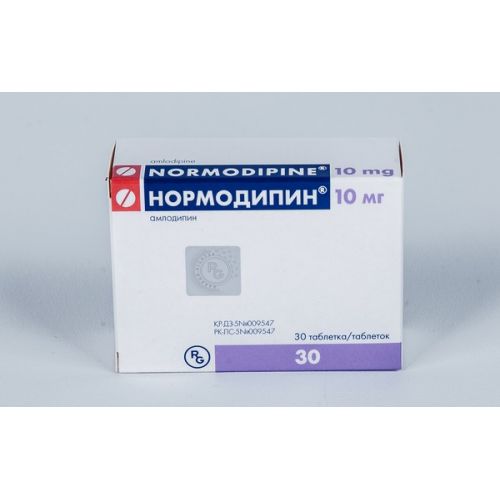
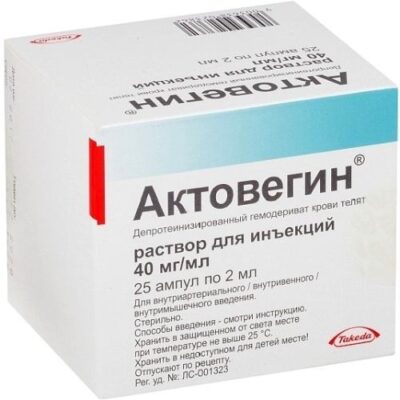
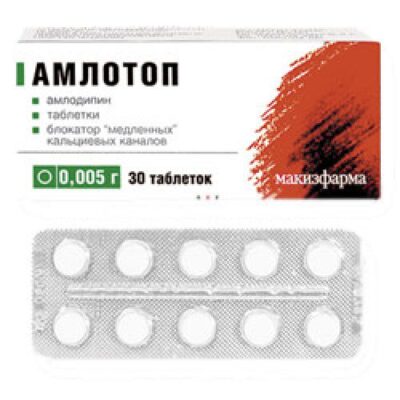
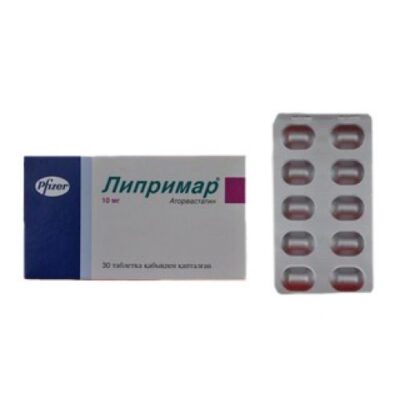
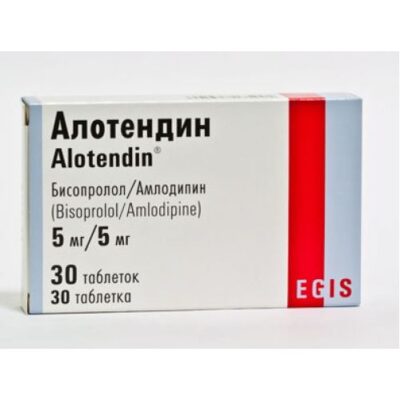
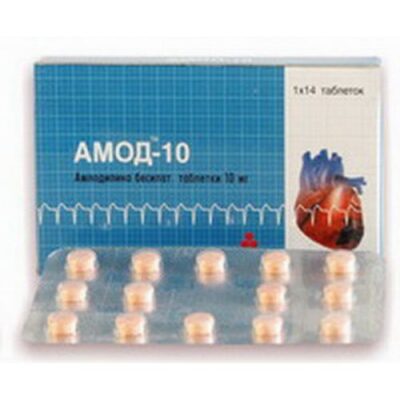
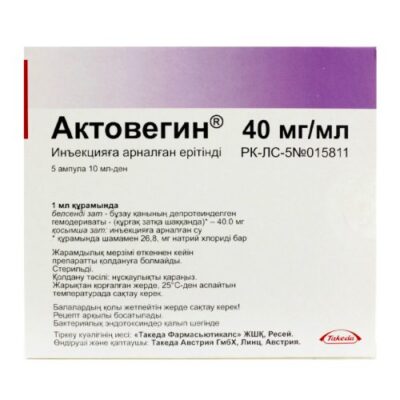
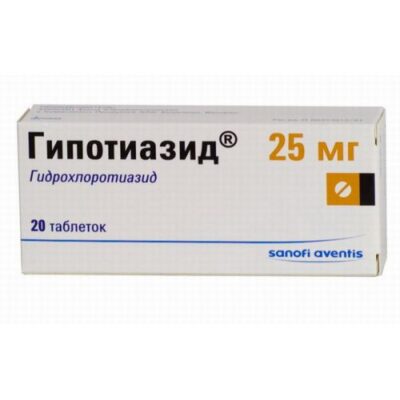
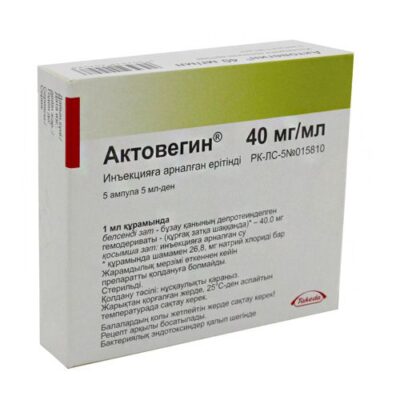
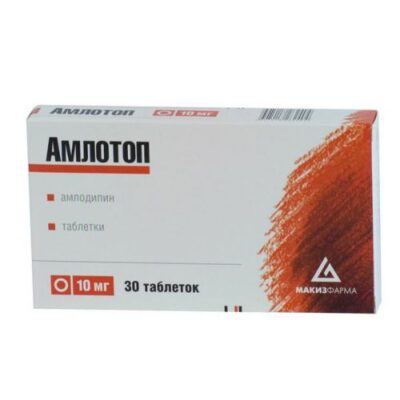
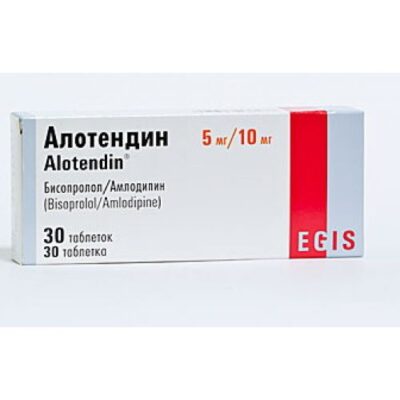






Reviews
There are no reviews yet.